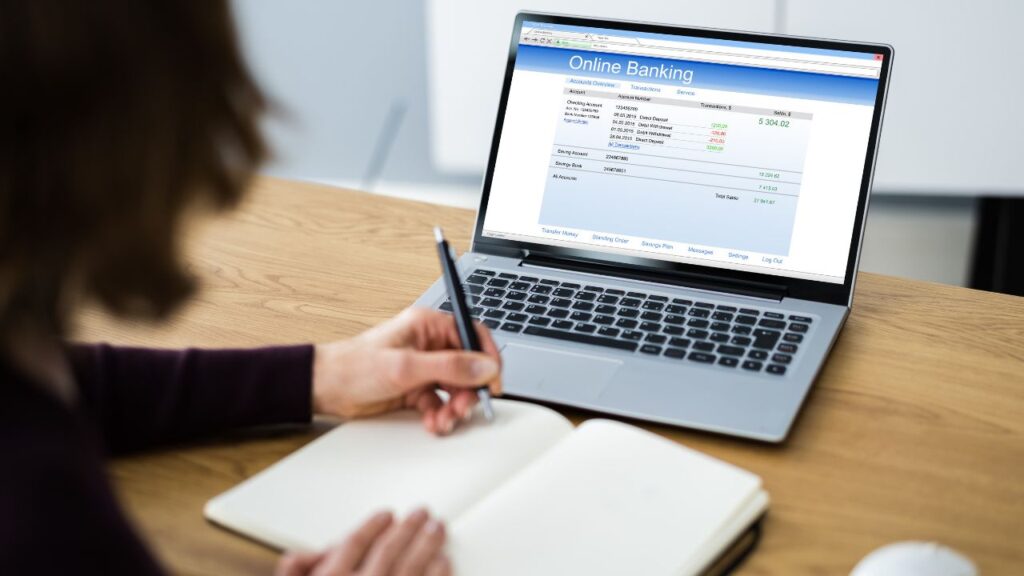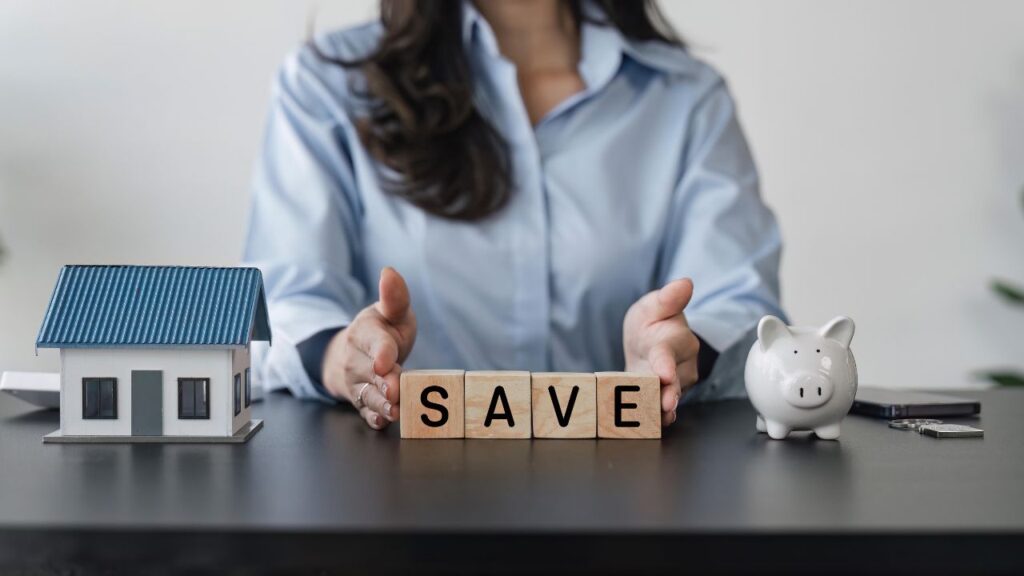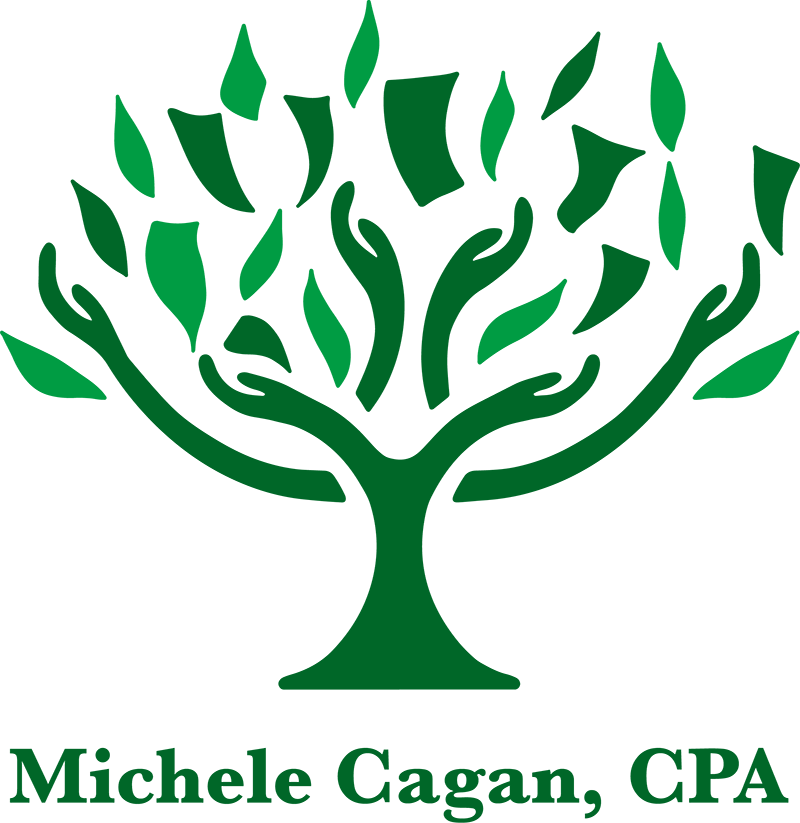Do you wish you had more emergency savings to fall back on?
Are you trying to save up for a down payment, a vacation, or a new washer/dryer?
Do you want your money to work harder for you?
There’s a simple way to make all of those things happen. All it takes is opening the right type of bank account to store your money. A high-yield savings account, or HYSA.
And, yes, it makes that much of a difference.
The Big HYSA Benefit – Or the Easiest Way to Earn Money While You Sleep
A high-yield savings account (HYSA) is like a regular FDIC-insured savings account that earns a significantly higher interest rate. It can be as much as 10 to 20 times more!
That’s where the “high yield” part comes in. Consider this: The average interest rate for a regular savings account is a paltry 0.59% (in August 2025, according to Bankrate.com). Some HYSAs are paying around 4.00%.
Here’s what that means in real money terms. If you had $1,000 in a regular savings account for a year, it would earn less than $6 in interest. That same $1,000 in a HYSA would reap $40.
And that difference snowballs over time, because your interest will earn its own interest going forward.
What Exactly Is a HYSA?
As I mentioned, high-yield savings accounts are just savings accounts that pay out higher interest rates.
Typically, they’re connected with online-only savings accounts, banks with no brick-and-mortar branches. Because they don’t have the same overhead expenses as physical banks, they can offer better rates for their customers. They may also have lower minimum balance requirements and fewer account-based fees.
That makes HYSAs the best place to put emergency funds and other savings accounts. Your money will grow faster, giving you an extra layer of financial security. You still have easy access to your money both online and on mobile apps. And many HYSAs offer ATM cards, though there may be fees involved.
Do I Really Need a Savings Account?
Absolutely, yes. Savings accounts are a crucial part of a successful financial plan. They can help you achieve goals, avoid debt, and build security.
I have 6 different savings accounts, all for different purposes. That doesn’t mean you need to have so many. But at the very least, I recommend an emergency fund and an everyday savings account. It’s better for them to be separate accounts, so you don’t dip into your emergency savings for things that aren’t emergencies.
Savings accounts are basically piggy banks held in official banks. They’re FDIC insured, so your money is more secure. And they pay interest, so your money earns its own money.
Having money in a savings account gives you more freedom, security, and flexibility. You can use it for anything from covering your dog’s dental surgery to a new hot water heater to a relaxing beach vacation. Every dollar you put into savings is one less dollar you’ll need to borrow in an emergency… and one more dollar toward achieving your goals.

Savings Account Options
Though I’m strongly in favor of HYSAs, there are other types of savings accounts you can use. Which will work best for you depends on your needs and your specific situation. That’s why it’s helpful to understand how each works, along with its strengths and drawbacks.
There are 3 additional types of savings accounts:
1. Traditional savings
Traditional savings accounts, sometimes called passbook savings, live in brick-and-mortar banks. You can go in person and open an account close to home during normal banking hours.
Benefits include face-to-face service with an actual person, dedicated ATMs with low or no transaction fees, and the ability to make cash deposits (even that jar of quarters you have lying around). Potential drawbacks include lower interest rates than other savings account types, limited operating hours (though it may also have online access), and fees that can wipe out any interest you earn.
2. Certificate of Deposit (CD)
CDs are locked-in savings accounts, where you get a guaranteed, usually higher-than-average interest rate in exchange for leaving your money untouched for a specific time period. Those lock-in periods typically range from three months to ten years. Some CDs allow for a single interest increase on longer periods, offering some protection if interest rates rise.
These accounts work best when you won’t need immediate access to those cash funds and want to earn steady interest, especially if you think rates will be going down. CD benefits include higher interest rates than regular savings accounts, locked-in rates even if prevailing rates go down, and the security of an FDIC-insured account.
On the downside, CDs tend to have high minimum deposit requirements, usually at least $500 or $1,000. Also, if you take the money out before the CD term is up, you’ll face early withdrawal penalties.
3. Money market account
Money market accounts act as hybrid checking and savings accounts. They offer debit cards and checks like regular checking accounts, but also pay interest like savings accounts. Usually, money market account rates are higher than regular savings accounts, with rates increasing for larger account balances.
These accounts can make sense if you’ve received a sudden windfall – like an inheritance – and you’re deciding how you want to use it and for long-term, larger savings goals like a house down payment. On the upside, you’ll earn more interest than in a regular savings account and will have instant access to your money when you need it.
On the downside, money market accounts tend to require large minimum deposits to open, ranging from $2,500 to $10,000. In addition, there may be limits on withdrawals and transfers out of the account.
Note: Don’t confuse money market accounts with money market funds. Money market accounts are FDIC-insured bank accounts. Money market funds are investments and are not insured.

Why Are High-Yield Savings Accounts Better Than Other Savings Accounts?
Saving money is a good choice, no matter where you decide to park your cash. All types of savings accounts offer at least some interest, which helps your money grow.
That said, HYSAs are often the best choice, especially when it comes to emergency savings. They typically offer the highest interest rates, which lets your money grow the fastest. HYSAs often have fewer and lower fees than regular savings accounts and lower minimum balance requirements than other types of savings accounts. You’ll have access to your cash whenever you need it. And your money will be FDIC-insured, guaranteeing you won’t lose a dime.
There are, of course, some minor drawbacks. Like, it can be tricky to make cash deposits without any brick-and-mortar branch access. And that they may not be attached to dedicated ATM networks, which can result in more ATM fees for you.
But, at least for me, the high-interest benefit outweighs those potential downsides. And I keep my savings in HYSAs.
How to Open a HYSA
The first step toward opening a high-yield savings account is picking a bank or credit union to hold it.
Here are some factors to consider when you’re choosing:
- Make sure it’s a legit bank – there are a lot of online scammers out there.
- Verify that your account will be FDIC-insured (NCUA for credit unions). Some institutions don’t offer this coverage.
- Look at comparative interest rates to make sure you’ll be getting a good return on your money.
- Check out all the account features like minimum balance requirements, fees, and ATM access.
You can find good comparisons and reviews for HYSAs at NerdWallet.
Once you’ve chosen a bank, you can set up your HYSA. Most banks have the same simple steps to follow:
- Complete an application that includes personal information such as your address, phone number, and Social Security number.
- Select the type of account you want to open.
- Deposit money into the account, usually by linking an existing external online bank account for easy transfers
You can open as many HYSAs or other savings accounts as you need to achieve your personal financial goals. I recommend at least an emergency savings account that you build up to at least six months’ worth of essential expenses.
I also keep a pet emergency fund, a “my kid might need help” fund, a general savings account, and a couple where I’m saving up for specific things (like an upcoming beach vacation). It’s easier for me to track and manage my savings when I keep them separated. But that’s not right for everyone. So create whatever savings plan works best for you.
Where Does a HYSA Fit In Your Financial Plan?
First, let me say that a high-yield savings account fits into everyone’s financial plan. Even if you just put a few dollars in every month. It will take longer, but that money will still grow, and it will be there when you need it.
As for how much to aim for, how much to start with, how much to sock away every month, where to open an account, and all of those other questions you may have, I can help you find the answers.
I offer financial coaching to help you make these decisions and customize a financial plan that works with your life and adjusts as your financial situation changes, up and down.
Together, we’ll sit down and discuss your current financial situation, as well as where you want to be and the best path for you to get there. We’ll talk about how much you can afford to put into a HYSA every month, as well as fears you may have around saving and spending, and how to adapt your financial life to overcome those fears.
If you’d like guidance on how and where to open your own HYSA (or three), how to deal with financial anxiety, and help with financial planning in general, let’s talk.
We’ll start with a free, no-pressure 30-minute session where we can get to know each other and figure out if we’re a good fit. Then we can discuss the best ways to move forward together.
Click on the button below to schedule your free 30-minute conversation now so that we can get started.

